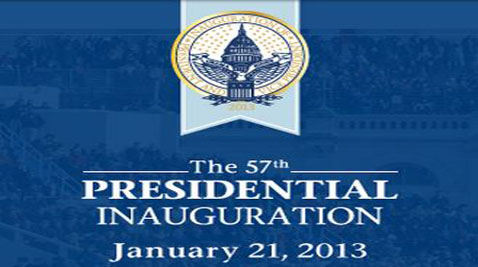WASHINGTON – Preliminary disclosures from the Presidential Inaugural Committee show 28 Marylanders have donated to Obama’s second inaugural, and many more are expected.
Their donations will help pay for Saturday’s National Day of Service events, a concert for children of military families and Monday’s inaugural parade and balls.
Ten of Maryland’s 28 PIC contributors also gave to Obama’s first inaugural committee, according to the independent watchdog group Center for Responsive Politics.
Marylanders donated $1,638,274 to the 2009 PIC, ranking the state eighth in total contributions, slightly behind Virginia. In 2009, 12 Marylanders gave the maximum $50,000 allowed by the PIC. There is no limit on donations this time around.
Only one of the 2009 Maryland big donors gave to Obama’s second inaugural committee — Emmanuel Irono, now of the District of Columbia and president of support services contractor Motir Services.
Another repeat Maryland donor, Susan Liss, of Chevy Chase, executive director of the Campaign for Tobacco-Free Kids, said she likely would do it again.
“I really support this president, and I believe in him and hope he’ll have a great second term,” she said. “I am really glad that I was able to help …I support candidates and causes as much as I am able to.”
Liss’ $10,000 donation to the 2009 Inaugural Committee netted her inaugural ball tickets. This time around, she bought tickets for her son and his girlfriend, who are flying in from Denver.
A long-time contributor to Democratic politicians and liberal causes, Liss made phone calls for Obama’s re-election campaign and held campaign events. Now she’s hosting an inaugural committee staffer at her home, as she has in the past.
It’s hard to get a comprehensive picture of inaugural donations because the 2013 PIC has released only donors’ names, a marked change from 2009, when it also released contribution amounts and donors’ hometowns. The PIC has 90 days to report contributions of more than $200 to the Federal Election Commission.
The Center for Responsive Politics is matching the names released weekly by the PIC with past donor lists in an effort to identify repeat contributors.
Beatrice Key, of Silver Spring, president of accounting firm Key & Associates, also comes up as a repeat donor. Key gave $10,000 in 2009 and $250 to this year’s committee, she said.
“This past year I didn’t do nearly as much as I did in 2008,” said Key, who will not attend the inauguration. “I figured this was a way to give back.”
Asked why she gave so much more last time around, Key said: “I had the finances to do it.”
Her involvement with the Obama campaign began at a dinner five years ago. Key was impressed that the campaign had reached out to her, unlike Obama’s Democratic primary opponent, then-Sen. Hillary Clinton, D-NY.
Key told her son, Phillip, then 11, who accompanied her to the dinner, that she would take him to the inauguration if her candidate won.
“You mean the man I met might actually become president?” she recalled him saying.
Key said the president’s policies have benefitted her, as she was able to get an SBA loan to buy a business two years ago.
H. Russell Frisby, Jr., of Columbia, a partner at Stinson, Morrison & Hecker, is another repeat donor. Frisby donated $1,035 to the 2009 PIC, which also went toward ball tickets.
“I am a supporter of the president and my wife and I have been going to the inaugural balls since 1996,” Frisby said in an email, noting that “after awhile the only things that change from ball to ball are the performers.”
Frisby declined to say how much he donated to this year’s PIC, but added that he “was not a major contributor.”
In an editorial in the Los Angeles Times Wednesday, Sheila Krumholz, CRP’s executive director, criticized the 2013 PIC for breaking from the tradition of transparency begun by its predecessor.
“Obama’s policy in 2009 bested those of all recent occupants of the Oval Office and went way beyond the law’s requirements,” she wrote. “That makes the backsliding this year especially disheartening.”
Brent Colburn, communications director for the PIC, defended the committee’s decision in a recent news conference.
“We believe this is a step above and beyond the transparency regulations placed down by the FEC,” Colburn said.
In another change from 2009, the 2013 PIC lifted a ban on corporate giving.
Asked about the committee’s goal for donations, Colburn declined to specify a figure but said the PIC is “on track to meet it.”
“We feel very comfortable with our numbers,” he said.

